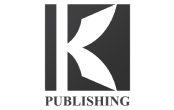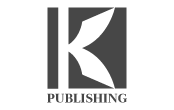The specifics of publishing have altered greatly over the past ten years and significantly so in 2025. Authors today face a monumental decision when it comes to bringing their books to market: It could be self-publishing through online platforms like KBook Publishing (KBP) or with the help of publishing houses. This decision is not only which direction is the most profitable, but the control over the creative process, pace of the market, and the future career. But which one of them is the best suited for you? So let’s not just focus on the general notions and instead look at the advantages and disadvantages of both forms of publishing in the year 2025.
Traditional Publishing: Its Position in the Year 2025
Conventional writing has always been considered to be the authoritative approach with regard to the subject matter dissemination among several authors. Even in 2025, people still have a strong desire to see their books on the shelves of big stores and receive good money for this from a successful publishing house.
However, the current obstacles have never been steeper. This is because of transformations that have occurred within the context of the industry and despite the fact the number of players in the market is limited, the number is reducing and in the same process, competition is growing stiffer. It is not easy to get book proposals. One can be rejected many times because the acceptance ratio is 0.1%. However, if an author has been lucky to get a contract with a publisher, then they are likely to wait up to two years before their books are published.
One of the biggest selling points of traditional deals is an opportunity to get money upfront—the money that is paid for the book in advance. However, these advances are not what they used to be, generally, and are much lower for first-time authors. Furthermore, this money is usually taken back from the author’s royalties, which essentially means the author will not see further gains until the publisher covers the advance. For most, that promise isn’t as appealing when measured against what they stand to give up — a sense of artistic freedom and longer waits for a book release.
Advantages of Traditional Publishing:
Credibility and Prestige: Books that go through the conventional publishing companies would be more credible than self-published books and can be hugely beneficial especially for authors writing non-fiction or those who intend to speak at various forums.
Widespread Distribution: Considered as an advantage in traditional publishing, is that conventional publishers have the resources and connections to easily get books into physical bookstores and libraries.
Editorial and Marketing Support: In the traditional publishing model there are professional editorial services with marketing services, or sometimes the authors themselves are expected to contribute for the marketing of their books.
Disadvantages of Traditional Publishing:
Loss of Creative Control: Publishing companies do not allow an author to be fully in charge of the book; they have to relinquish some decisions as simple as the cover of the book and as profound as what the book contains.
Lower Royalties: Standard contracts are often based upon net receipts or subject to a royalty rate between 5% and 15% of the sales price for the book, and this is far less than self-published writers who can achieve this on their own.
Lengthy Timeline: From the moment you sign a contract with a publisher to the time you hold the finished copy of your book may take between 18 months to 2 years.
Self-Publishing on the Rise in 2025
The phenomenon of self-publishing has been developed a lot since the time when self-published books were considered as outlets for those who could not find a publisher. By 2025; this business has grown and is still populated by reputable professionals where authors have total control of their creations. Self-publishing platforms such as KBook Publishing (KBP), allow authors to get their books to the market within a few weeks.
Another added benefit of going for self-publishing is that it is likely to be more profitable. Due to the fact that authors claim a much higher share of the revenues, KBP allows authors to self-publish their books on self-publishing platforms like Amazon Kindle, Barnes and Nobles, and so on. Because self-publishing also enables one to have a full say on matters of content, writing style, illustrations, production, marketing and distribution of a book, it’s usually the best way forward for emerging authors.
Advantages of Self-Publishing:
Creative Control: KBP’s self-publishing does not restrict authors in any way and they have the right to determine all aspects of their book including the content, layout and promotion.
Speed to Market: Most traditional book publishing companies have a standard publishing cycle that takes about six months to complete, and this does not include the time taken to draft the manuscript, whereas; self-publishing with KBP takes far less time, and sometimes books can be out in the market within weeks.
Building Your Author Brand: Self-publishing also creates the chance of branding the author, as the author gets to develop the look and even the feel of their books. By mounting your own marketing campaign, you will be able to speak to the readers directly. Blogs for sharing articles, social networks, automated emails to subscribers – all of this helps draw a regular readership and thus, more chances for repeat purchases. Typically, traditional publishers do not go to the extent of marketing an author’s book in such a manner, forcing most authors to struggle on their own even after they have published books.
Disadvantages of Self-Publishing:
Lack of Traditional Credibility: Despite the fact that self-publishing has become quite common, it is not highly popular and still has some stigma associated with it, particularly in the academic field and mainstream television and print media.
Marketing Challenges: However, one disadvantage of self-publishing is that there is no support from a conventional publisher and, therefore, promotion is the author’s sole endeavor.
Market Trends Comparison in 2025
With technological changes, the difference between self-publishing and traditional publishing companies is quite prominent in the year 2025. More authors are finding themselves inclining more towards the self-publishing world, and with platforms like KBP that allows you freedom of control, this comparison difference between self-publishing and traditional only widens more.
With regards to the new generations of authors and the involvement in social media and digital marketing, the paradigms of the traditional publishing industry are changing. At KBP, many self-published writers with established followership and who have the capability to promote themselves online can dictate better terms with conventional publishing companies or opt to continue with the self-publishing model.
This market is also experiencing an increase in independent publishing services: they are firms that provide services that are similar to the traditional ones and include editing, designing, and distribution of the book or a number of books; at the same time, they provide fully independent rights to the author and significantly higher royalties. This model provides a mid-tier solution for authors who want to outsource the work to a professional while still maintaining control over the process, deciding how the work is done, and overseeing its completion.
Case Studies that Testify For Self-Publishing
Self-Publishing Success: Mark Dawson’s “John Milton Series”
Mark Dawson is an independent self-made author, and is an embodiment of success in self-publishing. Dawson has authored a set of thriller novels known as “John Milton” series which have recorded high sales and are readily available globally. Dawson initially employed Facebook advertisements to create a large fan base. He was able to retain complete creative freedom that would not be possible in the traditional publishing houses, and he is able to earn far more money by receiving a much larger percentage of the royalties. Due to self-publishing and marketing techniques implemented by Dawson, he now offers classes in self-publishing and marketing.
The Upper Hand of Self-Publishing with KBP: A Blend of Technology and Expertise in 2025
In 2025, self-publishing with KBP uniquely combines technology and expert craftsmanship.
While advanced tools play a role in areas like audiobook creation and the final stages of publishing, the heart of our process remains guided by skilled professionals. From the initial draft to the final manuscript, each step is thoughtfully handled to ensure the author’s voice shines through, maintaining a personalized and human touch throughout.
Human-Inclined Editing: While AI has set the new standards of editing with Grammarly and ProWritingAid providing equally strong grammar checks, suggestions for styles and tones, and sometimes even enhanced narrative control, KBP differs from them. In this case, KBP retains technology as the last resort while placing a strong emphasis on the value of editors’ experience. The manuscripts are carefully revised by professional editors at KBP, who always have the upper hand and the final say in the process. This ensures that every manuscript receives the time and attention it deserves, leaving no page untreated.
Print-On-Demand (POD): Thanks to the advanced print-on-demand technology at KBP, self-published writers can benefit more compared to traditional ones. In POD authors can produce books as they are sold, thus avoiding massive investments on large print runs. This technology has also aided independent authors to provide print copies of their writing in print format without facing the financial implications that come with conventional printing.
Ebooks and Audiobooks: There is drastically increased usage of ebooks and audiobooks due to the digital revolution, a service provided by KBP as well. In the near future, more books will be sold in electronic form, and audiobooks are a source of additional revenue. This provides authors with an opportunity to independently develop audiobooks and expand their sales and revenue.
Which is Better? Self-publishing for the Win
With the quality of substitutive and new approaches that come with self-publishing at KBP, it becomes apparent that self-publishing provides authors with more prospects and benefits than traditional publishing. For the authors who want to be in charge of their works’ fates, the possible creative liberty, flexible schedules, and much better profits make self-publishing the superior option.
While the myth of getting picked up by a traditional publishing company might still be a reality for a handful of authors, KBP’s self-publishing will be the winning formula for the rest in 2025 and beyond. The tools and platforms out there and even the market itself is favorable for independent authors in the sense that they get to do what they want to do on their own terms.
Conclusion: Take the Leap with Self-Publishing
So, if you are an author in 2025, the choice is obvious. Self-publishing not only enables you to exercise greater control over your work, but also provides more lucrative returns coupled with speed to market. Thanks to KBP’s self-publishing service, there has never been a better time to go independent and get your work out into the world.
Who needs the long hours of research, binding contracts that last for years, and little financial return for their hard work through traditional publishing? At KBP, you will experience a new era of publishing where you are in control. Now is the time to take charge and start achieving your writing goals with self-publishing.



